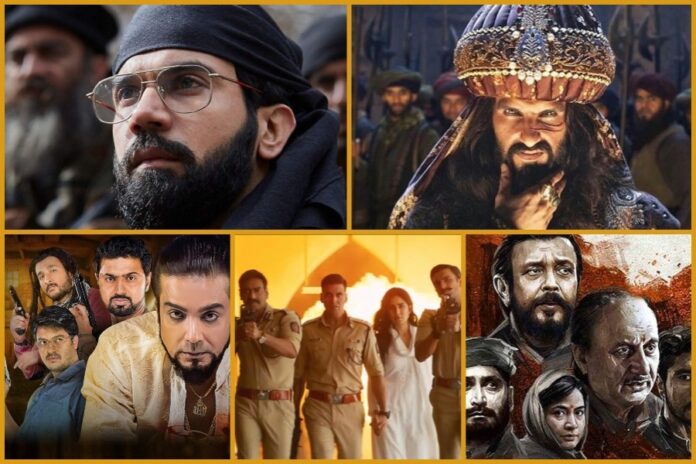Zeba Afrin, TwoCircles.net
Bollywood sells itself as India’s voice, which is secular, universal and meant for all. But look closely, and something is missing. Or rather, someone. Despite the industry’s loud proclamations of unity and shared identity, Muslim characters and culture remain pushed aside, shown only when necessary and rarely as part of everyday Indian life.
Once upon a time, Hindi films celebrated pluralism openly. In Yash Chopra’s ‘Dhool Ka Phool’ (1959), a character famously sang, “Tu Hindu Banega Na Musalman Banega, Insaan Ki Aulad Hai Insaan Banega”.
‘Amar Akbar Anthony’ (1977) built its entire plot around three brothers raised in Hindu, Muslim and Christian homes. These stories wore secularism on their sleeve. But they were the exception, not the rule.
In most mainstream films, India seems to have been imagined through Hindu eyes. There are temples, pujas and shlokas. But hardly ever a mosque. Muslim characters, if they exist, often have no religious or cultural markers beyond their names. No Eid celebrations. No azaan. No mention of Islamic faith or traditions. In Sumaiya Ahmad’s study on Islamic symbols in cinema, she writes that Bollywood “implicitly suggests that India is normatively Hindu”, even while claiming neutrality.
Even so-called “secular” films like ‘Kabhi Khushi Kabhie Gham’ or ‘Swades’ are soaked in Hindu imagery. We see Ganpati idols, Diwali lights and Sanskrit chants. But not a single frame shows a Muslim prayer or Islamic festival. The result? A cinema that claims to be for all, but only reflects some.
Token Muslim characters do appear. A sidekick. A friend with a name like Aslam or Salim. A villain with a beard and kajal-lined eyes. But their presence feels like background noise – never central, never cultural. They are rarely shown praying, celebrating Eid or existing as Muslims outside stereotypes.
And when Muslims are the focus, the story becomes “issue-based”. ‘Garm Hawa’ (1973), one of the first to realistically portray a Muslim family post-Partition, was delayed 11 months by censors. Movies like ‘Mammo’ (1994) or ‘Firaaq’ (2008) told necessary and beautiful stories, but were boxed into the art-house category. Even ‘My Name Is Khan’ (2010), with a global star and a powerful message, was treated as an exception rather than a norm.
Meanwhile, censorship ensures that anything too religious, even if true, gets cut. Director Raj Kumar Gupta was asked to remove quotes from both the Quran and the Gita in ‘India’s Most Wanted’ (2019) to “avoid hurting sentiments”. Sandhya Suri’s ‘Santosh’, a film about Islamophobia and caste, was banned entirely. Mihosh Yousaf’s ‘Sant Darshan’ on a Hindu pilgrimage was stalled over temple permissions. Religion, when it is honest, makes censors nervous.
This is not only about filmmakers. The Central Board of Film Certification (CBFC) reflects broader social discomfort. Showing real Muslims, with their faith and festivals, is considered risky. Safer to stick to nameless characters and Hindu-coded patriotism.
This subtle exclusion has consequences. As scholar Rafia Najar writes, Bollywood’s narrow portrayals create stereotypes that affect how others see Muslims and how Muslims see themselves. If you are never seen as part of the national story, do you really belong?
Even when films try to be neutral, the background tells another tale. In patriotic dramas, the soldier worships at a temple. In family films, children read the ‘Ramayana’ but never the ‘Quran’. In sports biopics, the locker room has Ganesh idols, not prayer mats. It is not hateful. But it is revealing.
And audiences feel it. Though research is scarce, many Muslim viewers have shared how invisible they feel. Their lives, their language and their culture are nowhere on screen. Even when Muslim characters exist, they are often flattened and stripped of authenticity.
Indian secularism, in theory, was meant to respect all religions. Philosopher Rajeev Bhargava called it “principled distance” rather than strict separation. But in practice, especially in cinema, that distance often leans one way.
Modern politics have only deepened this trend. After the Babri Masjid demolition in 1992, critics note an uptick in Muslim characters being cast as the enemy. Even today, mainstream hits like ‘Animal’ (2023) recycle majoritarian tropes, while claiming universal appeal.
To sum up: Bollywood does not shout its exclusion. It whispers it. Through silences, absences and background cues. Through the stories it tells and the ones it refuses to. It claims to be for everyone, but its default remains Hindu.
True inclusion would mean showing mosques as often as temples, Eid as often as Diwali and Muslim lives as complex, beautiful and every day. Until then, India’s biggest film industry will remain secular in theory, but majoritarian on screen.


